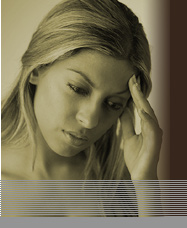An Overview of Cognitive Behavior Therapy
People who have anxiety, depression, and other emotional disturbances must learn to change their thoughts and behaviors in order to change the way they feel. Cognitive Behavior Therapy addresses the thoughts that reinforce negative viewpoints, and the behavior that occurs from those beliefs. Since thoughts and behavior work in an inextricable cycle, both sides must be addressed in order to change the way we feel.
The Cognitive Side Cognition is defined as the psychological result of perception, learning, and reasoning. Simply put, thoughts have an enormous impact on our mental health. Cognitive Therapy is not as simple as thinking positive. Human thought is complex, and changing the way we think can mean attempting to undo years of thought patterns. Some of these thought patterns may be negative and automatic.
We are all inherently imaginative beings with an endless amount of thoughts zipping in and out of our minds throughout the day. When these thoughts are negative in nature, they begin to disrupt our lives and slowly change our perspective from one that creatively visualizes to one that only has the capacity for negative visualization. Thoughts like, �We are all going to die anyway, so what's the point in doing anything at all?� often carry great emotional weight without any real solution. A major part of eliminating damaging automatic thoughts is to determine the core beliefs that these thoughts are rooted in.
Core beliefs can be divided into two categories: those of helplessness , and those of unlovability . For example, a person may have the automatic thought, �I can't get along with anyone,� which stems from the unlovable core beliefs. The automatic thought �I can't control my feelings anymore� is rooted in a helpless core belief structure.
By changing our core beliefs and the resulting automatic thoughts, we can change overall perceptions, feelings, and actions.
The Behavior Side The way we think and feel usually determines the actions that we take. If a person believes that he or she is unlovable, he or she may take actions to avoid being in relationships, something that could further validate their core belief. If someone thinks they are worthless, he or she may participate in dangerous, impulsive activity. Thoughts, feelings, and actions are completely linked together. By changing thought processes, actions can be changed as well.
The first step to addressing an emotional disturbance is to become aware of the thoughts and feelings that drive it. Actively investigating the thought processes from both a cognitive and a behavioral point of view can dramatically affect our ability to resolve any emotional disturbance permanently. |


